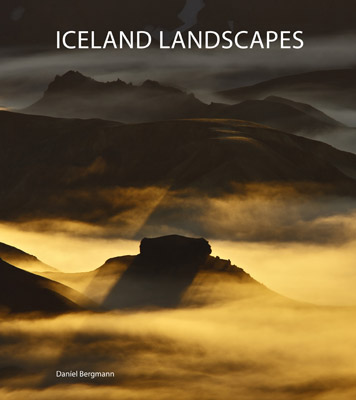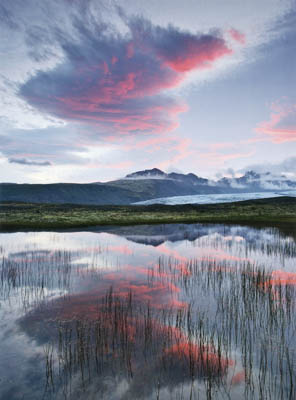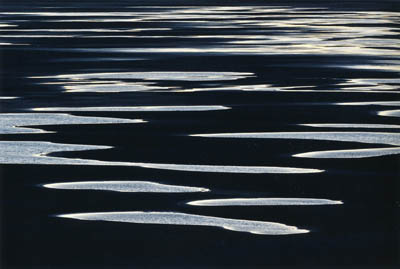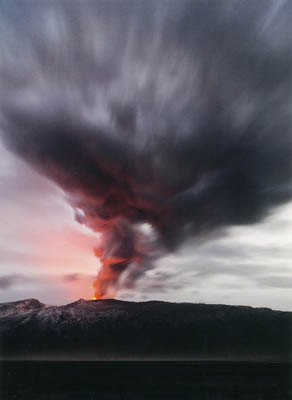The Art of Adventure - 40 Photographic Examples
A review of Bruce Percy’s first book
According to my email archive I “met” Bruce Percy online about 4 years ago, although it seems longer. I’d discovered his website some time before, and eventually got in touch, and we’ve had a low key conversation ever since. Over that time, Bruce’s progress has been meteoric. If ever there’s someone who has followed a dream with grim determination, it’s him. On the other hand, my own photographic progress curve has at the very best been flat…
Anyway, this isn’t about me, it’s about Bruce Percy’s first physical book, entitled “The Art of Adventure - 40 Photographic Examples”, a very clear, and explicit reference to Ansell Adams’ “Examples - The making of 40 photographs”. A bit of a cheek, you might think ? Or perhaps more a question of setting the bar very high.

The quality of the book as an object is striking. Despite his protestations to the contrary on his blog, Bruce clearly has a perfectionist streak, or at the very least a very fine attention to detail. The layout, the typefaces, the print quality, the feel and heft of the book strongly belie the fact that it is his first “real” publication.
So what about the content ? Well, there’s a surprise awaiting the casual browser, because alongside his very characteristic landscapes featured on the dust cover, a equal amount of space is given to his travel photography and especially portraiture. While Bruce admits to Michael Kenna - who wrote the preface - as a key influence, there’s more than a touch of Steve McCurry in there too. Pretty heady stuff. Funnily enough, Adams’ book also surprises with its wide range of content, moving far beyond his famous landscapes, and including portraiture.
Following the Adams model, each photo is accompanied by descriptive text which discusses motivation and thoughts on the shot, along with brief technical details. It’s far less wordy than Adams’ book, and in a way this might be the book’s weakness.
Adams’ book is clearly very didactic on nature. The photos serve to illustrate the text. It’s a textbook, in fact. In Bruce’s book, on the other hand, I’m tempted to say that the text distracts attention and detracts from the photos. In presentation, the book is a monograph, but once you get inside it, it gets a bit confusing. In fact it ends up feeling like a extended mix of one of the author’s eBooks.
In the spirit of Constructive Criticism, personally I don’t think this part of the project works that well. It would have been better to give the photos the space to breathe that they so much deserve, and perhaps bookended them with a set of essays. Because in fact Bruce is also an excellent and engaging writer (not to mention a gifted musician, dammit) and one could say that the photos in turn distract attention from the text. There are of course plenty of photography books that use a similar photo / text mixed layout - but they tend to be “how to” books to one extent or the other, not principally art. And this feels like it should be an art book.
So what about the art then ? Well, Bruce Percy has carved out a very distinctive landscape photography style. A lazy characterisation would be to describe it as sort of Michael Kenna in colour, but actually that’s much too easy an analogy. Kenna is clearly an influence and in some cases a starting point, but Bruce is quite obviously his own man and no copyist. His style is quite removed from the general UK Landscape community. It can verge on abstract, but always retains detail, depth and strong composition. It’s often very much about movement and silence. It’s very, very dark blue violet. It’s very romantic. It’s a touch nordic. And I would imagine it polarises opinion. Although his photos are almost always exceptionally beautiful, they’re never gratuitously pretty, and I doubt he’ll get far in the picture postcard market. Sometimes he pushes his style to extremes, and he’s clearly got a streak of bloody-mindedness about him, because the photo he chose as the front cover is one of his most extreme. I have to confess I’m sometimes in two minds about actually liking his style, but I have no doubt that I admire it.
His portraits are perhaps more conventional, but only to the extent that Steve McCurry, or John Isaac, are conventional. They speak of a strong empathy and sense of communication with the subjects, which given that the average landscape photographer is a withdrawn sociopath is all the more remarkable.
But you know what ? You need to get a copy for yourself. “The Art of Adventure - 40 Photographic Examples” isn’t perfect, but there can’t be many more impressive first publications out there.








